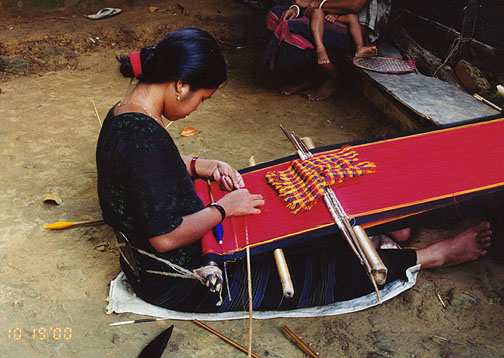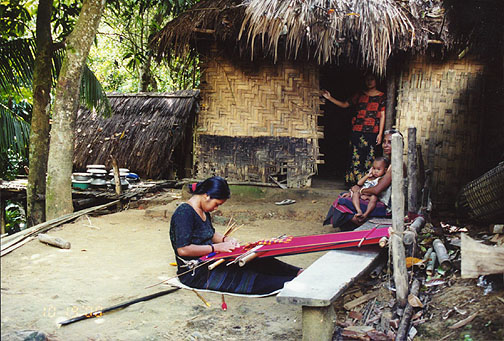Please View Sponsored Advertisements to Support this Site and Project
The Fate Of The Chakma - displaced tribal people of Bangladesh
INVASION OF THEIR traditional lands by settlers has led Bangladesh's Chakma people into conflict with the authorities and each other, as they struggle to protect their traditional culture.
RANGMATI, EN THE Chittagong Hill Tracts in the east of Bangladesh, is a drowned town, submerged by the creation of the Kaptai Lake in 1962, which covered 54,000 acres of land belonging to the indigenous Chakma people. A new city has crept out of the water around the lake, a scattered circular settlement: what were the peaks of hills are now islands and embankments surrounded by water, reached only by leaky country boats.
In the flooded fields and felled jungles may be read the fate of the tribal peoples threatened with the embalming of their customs and traditions in folk-museums. The language has already retreated from the public spaces, spoken now only in the home. These peaceable hills have been subject to an extraordinary violence, which in turn evoked a violent response.
Between 1980 and 1997, almost 10,000 people are known to have died in the low-intensity war which ravaged the already damaged environment and culture of the Chakmas. The cause of conflict was the influx of Bengali settlers from the plains in the 1970s: this upset the demographic balance, and made the traditional jhum (slash and burn) cultivation no longer sustainable. The 5,093 square miles of the Hill Tracts (almost 10 per cent of the land mass of Bangladesh) became highly militarised; 70,000 people crossed the border to India and 60,000 more were internally displaced by massacres, burnings and evictions.

